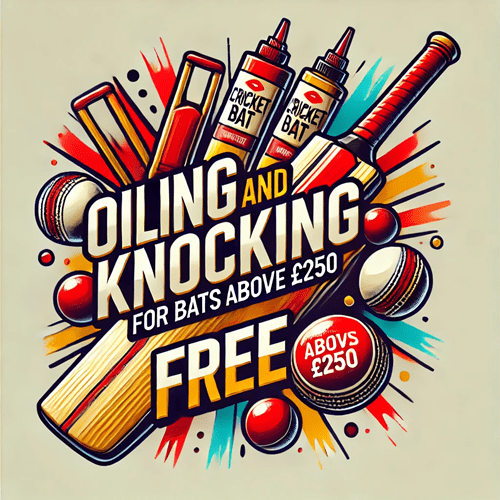Choosing Junior Cricket Gear: A Complete Buying Guide
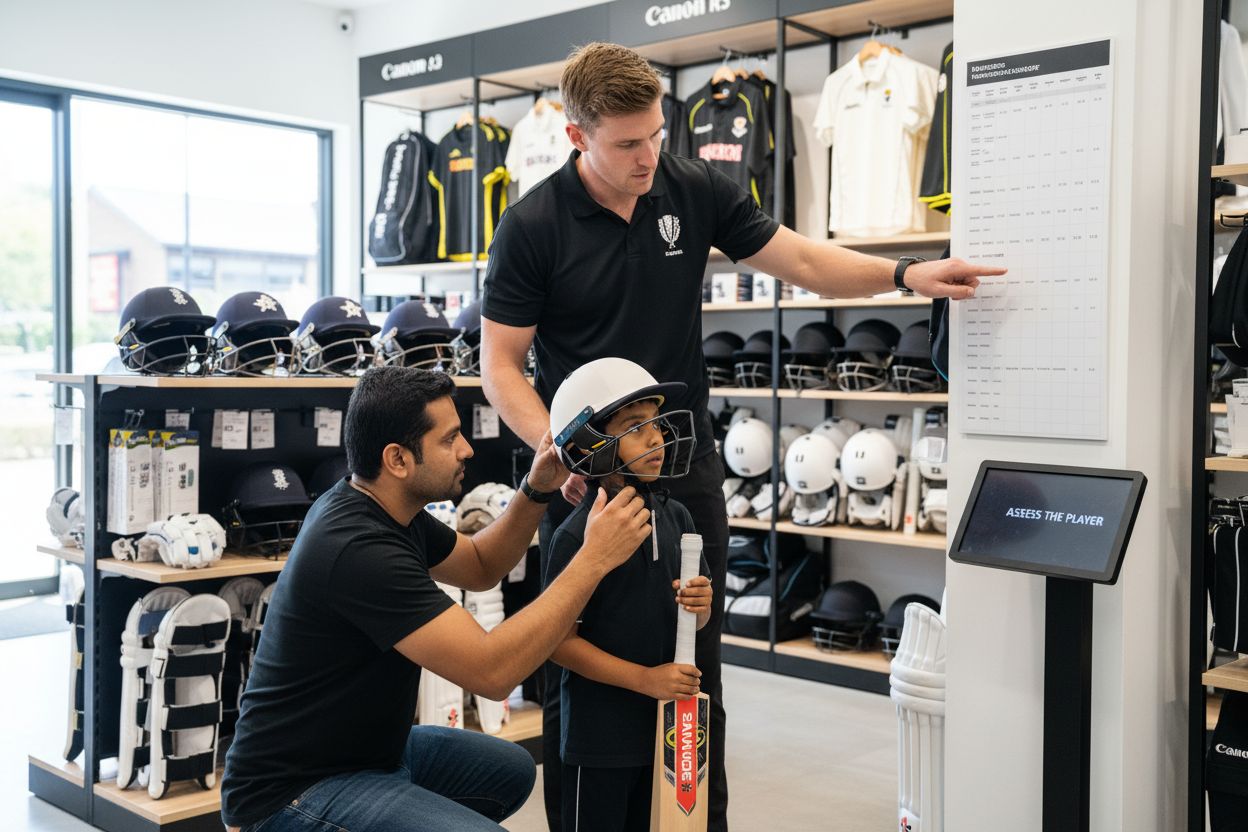
Buying junior cricket gear sounds simple at first. After all, millions of young athletes play every year, yet kids under 10 need dramatically different equipment than teens gearing up for competition. Most parents focus only on sizing charts or flashy colors when picking out gear and miss what matters most. The real secret is that getting the right cricket gear can shape a child’s confidence, speed up their skill development, and even keep them excited to come back to practice each week.
Table of Contents
- Step 1: Assess The Player’s Needs And Skill Level
- Step 2: Research Different Types Of Cricket Gear
- Step 3: Measure For Proper Fit And Comfort
- Step 4: Select Gear Based On Quality And Durability
- Step 5: Compare Prices And Find The Best Deals
- Step 6: Verify Gear Suitability And Prepare For Use
Quick Summary
| Key Point | Explanation |
|---|---|
| 1. Assess player’s skills and needs first | Evaluate the young player’s skill level and physical development to inform appropriate gear choices for safety and performance. |
| 2. Research specific gear types carefully | Understand the essential categories of cricket gear, prioritizing protective equipment that suits the player’s age and skill level. |
| 3. Ensure proper fit and comfort | Measure accurately to ensure that gear fits correctly, allowing for unrestricted movement during play while promoting confidence and safety. |
| 4. Focus on quality and durability | Choose high-quality equipment made from robust materials to ensure longevity and effective protection for young players. |
| 5. Compare prices to find best deals | Investigate various retailers and look for seasonal sales to get the best value while ensuring the safety and quality of the gear. |
Step 1: Assess the Player’s Needs and Skill Level
Choosing junior cricket gear begins with a critical first step: thoroughly understanding the young player’s current skill level, age, and developmental stage. This foundational assessment will directly influence every subsequent gear selection decision, ensuring both performance and safety are optimized.
The process starts with an honest evaluation of the player’s cricket experience. Are they a complete beginner just discovering the sport, or a more experienced junior with several seasons of play? Younger players under 10 will have dramatically different equipment requirements compared to teenagers approaching competitive play.
Age and physical development play pivotal roles in gear selection. A 12-year-old who has experienced a recent growth spurt will need different specifications than a smaller, less developed 10-year-old. Physical strength, coordination, and body mechanics should guide your equipment choices. According to the England and Wales Cricket Board, matching equipment to a player’s physical capabilities can significantly enhance learning and enjoyment.
Skill assessment involves observing several key performance indicators.
Watch how the young player handles a bat, their batting stance, and bowling technique. Look for signs of comfort and natural movement. Does the current equipment feel too heavy or unwieldy? Are they struggling to maintain proper form? These observations provide crucial insights into the right gear specifications.
Consider also the player’s commitment and future potential. A child showing serious interest and rapid skill development might warrant investing in higher quality, slightly more advanced equipment. Conversely, a casual player might benefit from more affordable, adaptable gear that allows flexibility as they explore the sport.
Verification of a successful assessment includes ensuring the young player feels confident and comfortable with potential equipment choices. Their physical ease, enthusiasm, and ability to maintain proper technique while using the gear are clear indicators that you’ve made an appropriate selection.
Remember, selecting junior cricket gear is not just about current performance but creating an environment that nurtures skill development, safety, and most importantly, the child’s love for the game.
Step 2: Research Different Types of Cricket Gear
Researching cricket gear is a strategic process that transforms your initial assessment into actionable knowledge. This critical step involves understanding the specialized equipment required for different playing positions and age groups, ensuring you make informed purchasing decisions.
The research journey begins with comprehensive exploration of essential gear categories. Cricket equipment is not one-size-fits-all, particularly for junior players. Each piece serves a specific protective or performance function. Batting gear, protective equipment, bowling accessories, and training tools each demand careful consideration.
Protective gear takes center stage in junior cricket equipment research. Helmets, leg guards, gloves, and body protection are non-negotiable safety investments. Look for age-appropriate sizing and materials that offer maximum protection without restricting movement. Lightweight yet robust equipment allows young players to maintain agility while staying safe.
Material composition becomes a critical research focus. Modern cricket gear incorporates advanced synthetic materials and innovative design technologies. Researching gear made from breathable, moisture-wicking fabrics can significantly enhance comfort during play. Pay attention to durability ratings, impact resistance, and manufacturer recommendations for junior players.
Consult multiple sources during your research phase. Professional cricket coaching websites, equipment manufacturer specifications, and our comprehensive cricket gear buying guide provide invaluable insights. Online forums, junior cricket coaching platforms, and equipment review sites offer real-world perspectives from players and parents who have navigated similar purchasing decisions.
Verification of successful research includes developing a clear understanding of:
- Specific equipment requirements for the player’s age group
- Recommended brands and models for junior cricketers
- Price ranges and quality indicators for different gear categories
- Safety standards and certification marks
Remember that thorough research transforms equipment shopping from a potential guessing game into a strategic, informed process. The goal is not just purchasing gear, but finding the perfect equipment that supports a young player’s cricket journey.
Step 3: Measure for Proper Fit and Comfort
Measuring for proper fit represents a pivotal moment in selecting junior cricket gear, transforming generic equipment into personalized performance tools. This step goes far beyond simple sizing charts, requiring a nuanced understanding of how gear interacts with a young player’s body and movement patterns.
Accurate measurements are the foundation of comfort and performance.
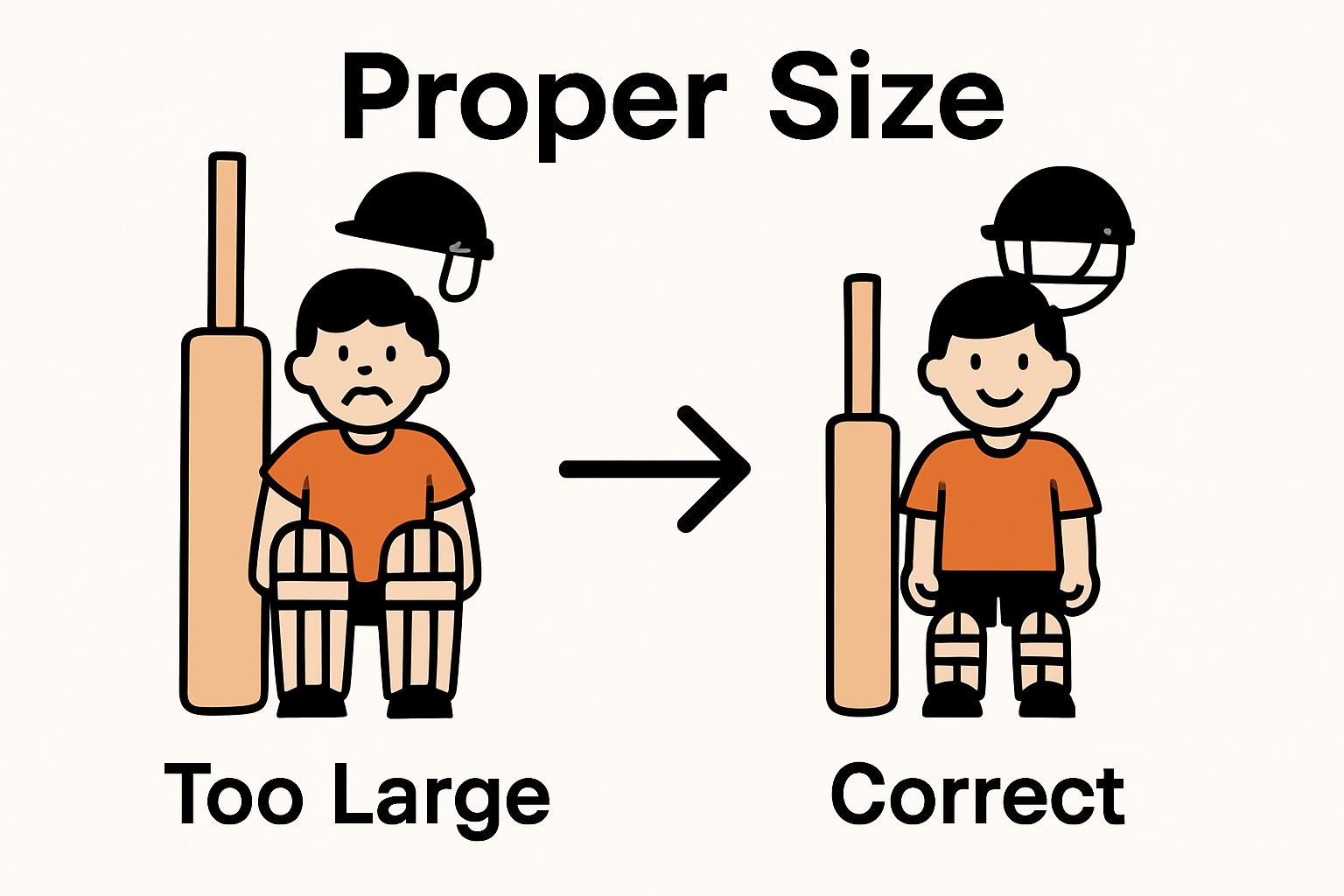 Begin by gathering essential measuring tools: a flexible fabric tape measure, comfortable fitting clothes, and a patient young player willing to stand still for measurements. Height, weight, arm length, chest circumference, and leg measurements provide comprehensive data for equipment selection.
Begin by gathering essential measuring tools: a flexible fabric tape measure, comfortable fitting clothes, and a patient young player willing to stand still for measurements. Height, weight, arm length, chest circumference, and leg measurements provide comprehensive data for equipment selection.
For batting equipment, precise measurements become critical. Bat length and weight must align perfectly with the player’s physical capabilities. A bat that feels too heavy restricts swing mechanics, while an undersized bat limits power and control. According to the England and Wales Cricket Board, junior bats should allow comfortable grip and natural swing motion without causing strain.
Protective gear demands meticulous fitting considerations. Helmets require precise head circumference measurements, ensuring complete protection without restricting vision or causing discomfort. Leg guards and gloves should provide complete coverage while allowing unrestricted movement. The goal is creating a protective barrier that feels like a second skin, not a cumbersome obstacle.
Fitting sessions should involve active movement tests. Have the young player simulate batting stances, bowling actions, and fielding positions while wearing potential gear. Watch for signs of restriction or discomfort. Can they rotate their shoulders freely? Do leg guards impede running? Does the helmet stay securely positioned during dynamic movements?
Verification of a successful fitting involves observing these key indicators:
- Comfortable, unrestricted movement across all cricket-related actions
- No visible gaps in protective equipment
- Equipment feels lightweight and balanced
- Young player exhibits confidence and ease while wearing the gear
Remember that junior players grow quickly. Choose equipment with some adjustability or room for growth, balancing immediate needs with future adaptability. The perfect fit today might require reassessment in six months, so maintain flexibility in your approach.
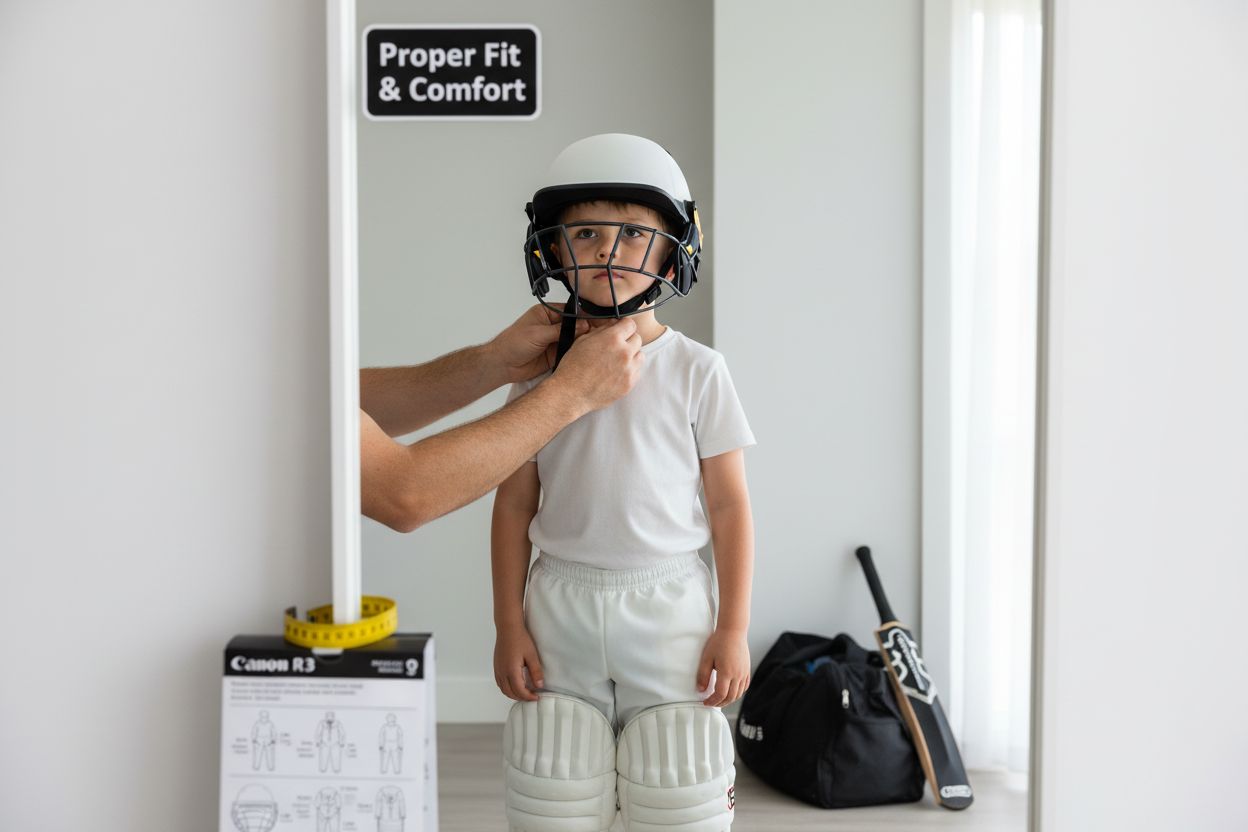
Step 4: Select Gear Based on Quality and Durability
Selecting cricket gear for junior players demands a strategic approach that balances quality, durability, and cost-effectiveness. This crucial step transforms preliminary research into meaningful equipment investment, ensuring young cricketers have gear that supports their developing skills and withstands rigorous playing conditions.
Material quality emerges as the cornerstone of intelligent gear selection. Modern junior cricket equipment incorporates advanced synthetic materials designed to provide superior protection, flexibility, and longevity. Look for gear constructed with reinforced stitching, high-density protective padding, and moisture-wicking fabrics that can endure frequent use and washing.
Durability assessment requires careful examination beyond surface appearances. Inspect equipment for robust construction techniques, strong seams, and resilient materials that can withstand impacts, repeated movements, and potential growth-related stress. Cheaper alternatives might save money initially but often require more frequent replacement, ultimately costing more in the long term.
Consider the specific stress points for different equipment types. Batting gloves need reinforced palms, helmets require impact-resistant shells, and protective pads should maintain shape and cushioning after multiple uses. The goal is finding gear that maintains structural integrity through consistent practice and match play.
Budget considerations should not compromise safety or performance. While top-tier professional equipment might be prohibitively expensive, seek mid-range options that offer robust protection and reasonable longevity. Our comprehensive cricket gear buying guide provides insights into identifying value-driven equipment selections.
Verification of quality involves systematic evaluation across multiple dimensions:
- Consistent material integrity after multiple uses
- Maintenance of protective capabilities
- Resistance to wear and tear
- Preservation of original shape and functionality
- Positive feedback from experienced coaches or players
Remember that quality gear is an investment in a young player’s cricket journey. Prioritize equipment that provides comprehensive protection, supports skill development, and instills confidence. The right gear can transform practice sessions from mere training to meaningful skill-building experiences.
Step 5: Compare Prices and Find the Best Deals
Comparing prices and securing the best deals for junior cricket gear requires strategic planning and savvy shopping techniques. This step transforms your careful research and quality assessment into a financially smart purchasing decision that maximizes value without compromising equipment performance.
Online and offline price comparisons become your primary research strategy. Modern shopping demands exploring multiple purchasing channels. Specialized cricket equipment stores, sporting goods retailers, online marketplaces, and direct manufacturer websites each offer unique pricing structures and potential savings opportunities. Create a comprehensive spreadsheet tracking prices across different platforms to visualize comparative costs effectively.
Seasonal sales periods present exceptional opportunities for smart purchasing. End-of-season clearances, back-to-school promotions, and holiday discount events can significantly reduce equipment costs. According to The Conversation’s research on junior sports expenses, strategic timing of purchases can lead to substantial financial savings without sacrificing gear quality.
Be cautious of prices that seem unrealistically low. Extremely discounted cricket gear might indicate inferior materials or compromised safety standards. Balance cost considerations with the quality and protective capabilities you identified in previous research stages. Look for reputable retailers offering transparent pricing, clear return policies, and manufacturer warranties.
Online price comparison tools and cricket equipment review websites can streamline your research process. Utilize these resources to track price trends, read user reviews, and identify potential discounts. Sign up for newsletters from cricket equipment retailers to receive early notification of sales and promotional offers.
Verification of successful price comparison includes:
- Comprehensive price documentation across multiple retailers
- Identification of best value options considering quality and cost
- Understanding of current market pricing for specific gear types
- Confirmation of potential savings without compromising equipment standards
Remember that the cheapest option is not always the most economical. Factor in equipment longevity, protective capabilities, and potential replacement costs when making final purchasing decisions. Smart shopping combines thorough research, strategic timing, and a holistic view of equipment value.
Step 6: Verify Gear Suitability and Prepare for Use
Verifying gear suitability marks the final critical stage in selecting junior cricket equipment, transforming purchased items into performance-ready tools. This comprehensive evaluation ensures that every piece of gear meets safety standards, fits perfectly, and supports the young player’s developing skills.
Initial inspection requires meticulous attention to detail. Carefully examine each piece of equipment under good lighting, checking for manufacturing defects, consistent stitching, and structural integrity. Look for any signs of potential weakness in protective padding, bat grips, or helmet shells. Minor imperfections discovered now can prevent potential safety issues during play.
Preparing equipment involves more than visual inspection. Certain items, particularly cricket bats, demand specific conditioning processes. For wooden bats, oiling and knocking-in become essential preparation techniques that strengthen the bat’s surface and prevent premature cracking. Our comprehensive cricket gear buying guide provides detailed insights into proper equipment maintenance and preparation techniques.
Conducting practical tests allows thorough verification of gear performance. Arrange a controlled practice session where the young player can simulate actual cricket movements while wearing new equipment. Observe their comfort, movement range, and overall confidence. Pay special attention to how protective gear interfaces with different playing actions like batting, fielding, and potential bowling techniques.
Maintenance and care instructions represent a crucial aspect of gear suitability. Review manufacturer recommendations for cleaning, storage, and long-term preservation. Proper care extends equipment lifespan and maintains optimal performance characteristics. Store gear in cool, dry environments and avoid exposing items to extreme temperatures or direct sunlight.
Verification checklist for gear suitability includes:
- Complete visual and structural inspection
- Confirmation of proper fit during dynamic movements
- Understanding of specific maintenance requirements
- Verification of safety standards and protective capabilities
- Young player’s comfort and confidence while wearing equipment
Remember that gear verification is an ongoing process. Regular inspections, especially during rapid growth periods, ensure continuous alignment between equipment and the player’s evolving physical capabilities. The goal extends beyond initial purchase selecting gear that grows and adapts with the young cricketer’s developing skills.
Below is a checklist table to help ensure that all verification steps for gear suitability and preparation are completed before your child starts playing.
| Verification Step | What to Check | Why It Matters |
|---|---|---|
| Visual and structural inspection | Check for defects, weak spots, and faulty stitching | Ensures safety and prevents injuries |
| Proper fit during dynamic movements | Confirm fit while simulating batting and fielding | Promotes comfort and unrestricted movement |
| Maintenance requirements understood | Review care/cleaning instructions from the manufacturer | Maintains gear longevity and performance |
| Safety standards verified | Look for certification marks or safety labels | Confirms protective capabilities |
| Player comfort and confidence | Observe attitude and body language in new gear | Supports positive experience and skill |
Unlock Confidence and Performance With CricketKingdom.co.uk
Are you struggling to find junior cricket gear that truly fits your young player’s needs? If you have ever worried about getting the right size, quality, or protection for your child, you already know how overwhelming it can feel to sift through endless choices. Having the right fit and durable materials is critical, and every step from careful measurement to gear comparison can help avoid disappointment or wasted money. CricketKingdom.co.uk is here to take the stress out of this process and help your growing player find equipment that builds confidence and skill from the first fitting to the next big game.
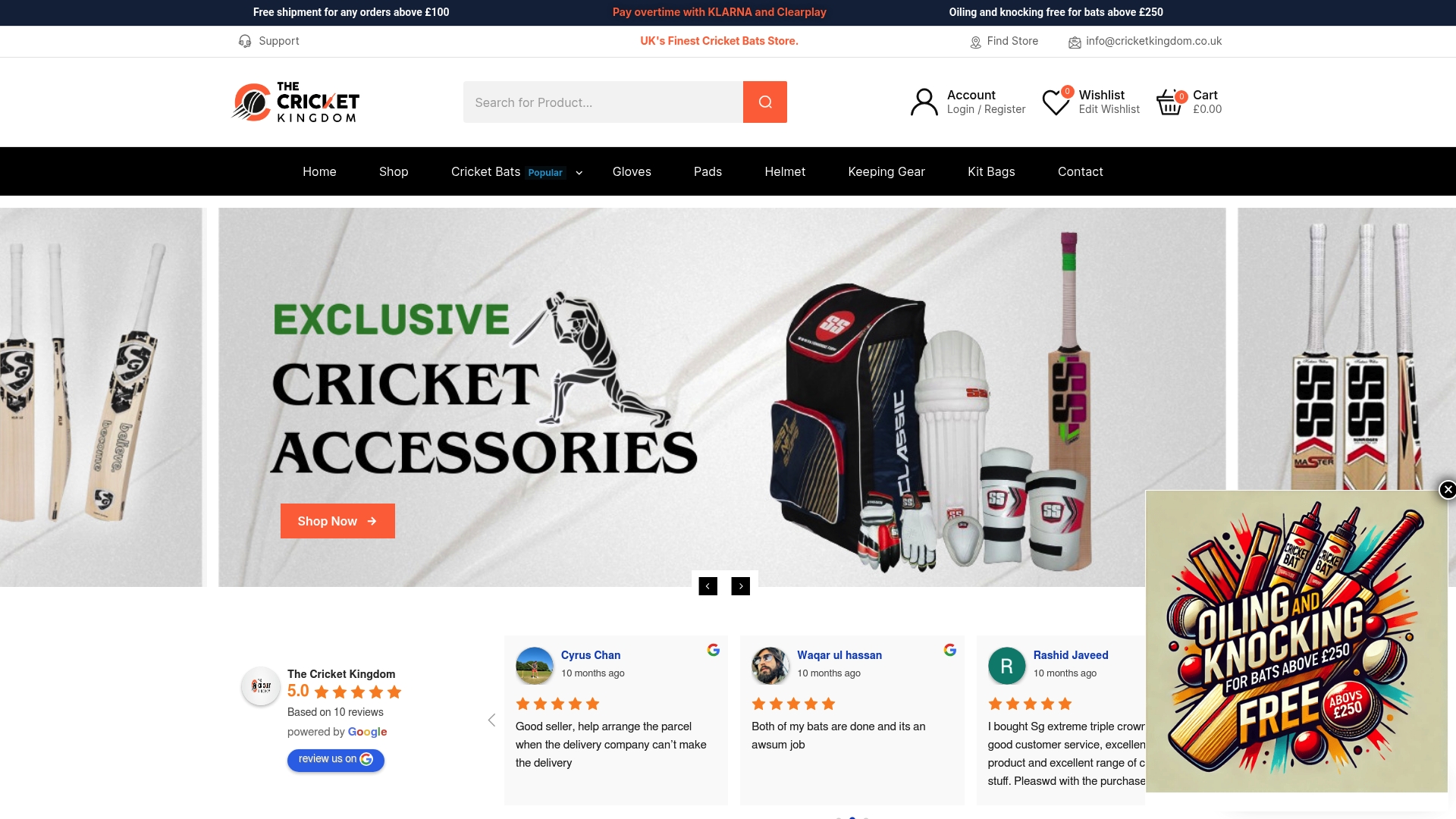
Give your child the best start in cricket with our trusted range of junior gear. Shop our well-curated selection of bats, pads, helmets, and more at CricketKingdom.co.uk where every product comes with detailed information, honest customer reviews, and buyer support. Take advantage of custom services like free oiling and knocking for high-value bats so your purchase is ready for the field. Discover reliable gear, secure payment options, and fast, free shipping on orders over £100. Do not wait — invest in your player’s skill and safety today by browsing our complete store and start building their cricket journey with the confidence only quality equipment brings.
Frequently Asked Questions
How do I assess my child’s skill level for choosing junior cricket gear?
To assess your child’s skill level, observe their experience with cricket, age, and physical development. Watch how they handle a bat or ball and look for signs of comfort or difficulty to guide your gear selection.
What types of cricket gear should I prioritize for my young player?
Prioritize protective gear such as helmets, pads, and gloves, along with a bat that suits their height and strength. Start by identifying essential categories based on their playing position and skill level before making any purchases.
How can I ensure that junior cricket gear fits properly and comfortably?
Measure your child’s height, weight, and other relevant dimensions accurately, then conduct fitting tests with the gear. Have them simulate cricket movements to check for comfort and mobility before finalizing any purchases.
What should I look for when evaluating the quality and durability of cricket gear?
Check for robust construction, reinforced seams, and materials designed for repeated use. Inspect the gear for long-lasting features like impact resistance and moisture-wicking capabilities to ensure it withstands the rigors of play.
How can I find the best deals on junior cricket gear while ensuring quality?
Compare prices across multiple platforms while focusing on quality indicators you’ve identified during your research. Keep an eye out for seasonal discounts to secure good value without sacrificing gear standards.
What steps should I take to prepare junior cricket gear for use?
Conduct a thorough visual inspection of the equipment for any defects, and follow specific conditioning procedures for items like bats. Ensure your child tries on the gear during practice to confirm comfort and readiness for play.
Recommended
- Understanding Cricket Gear Buying Guide for Players – The Cricket Kingdom
- Essential Cricket Equipment in the UK: Must-Have Gear for Every Cricketer – The Cricket Kingdom
- 9 Essential Items for Your Cricket Equipment Checklist – The Cricket Kingdom
- Find the Best Deals on Cricket Gear | Cricket Kingdom
- 7 Must-Know Tips for Choosing Sustainable Sports Equipment –

